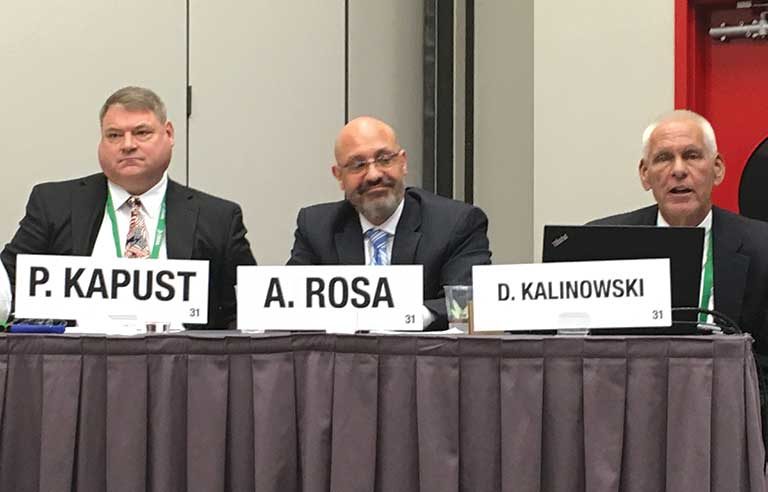Tech Session takes a look at OSHA’s ‘current activities’

Houston — When OSHA revised its rules for reporting severe injuries in 2014, agency officials were not sure what to expect, Patrick Kapust, deputy director of OSHA’s Directorate of Enforcement Programs, said Monday during the “OSHA Current Activities Update” Technical Session at the 2018 National Safety Council Congress & Expo.
“There were some estimates that it could be up to 100,000 reports (annually), and that’s just federal OSHA,” Kapust said. “We do about 32,000 inspections a year. Can we do 100,000 inspections? No, we just don’t have the resources.”
What followed were new procedures for handling incidents to help both compliance and enforcement efforts, Kapust said.
“We created this new animal called a Rapid Response Investigation” for addressing incidents that involve amputations and hospitalizations, Kapust said. “This was our opportunity to engage with that employer about what they might need in order to better prevent these type of injuries from happening in the future.”
The RRI process directs employers to provide information on how they can avoid these injuries in a collaborative, problem-solving approach.
Kapust said approximately 10,000 incidents are being reported each year. Over the past four years, the highest number of incidents was 11,442 in 2017, including 8,063 hospitalizations. So far this year, 4,932 hospitalizations and 1,557 amputations have been reported.
Throughout the process, the percentage of RRIs has risen for both hospitalizations (69 percent in 2015) and amputations (41 percent). Thus far this year, 75 percent of hospitalizations have been handled via an RRI rather than an inspection; 55 percent of amputations were investigated via RRIs as opposed to an inspection.
“We are continually looking at this for better ways to refine this program and better target our resources,” Kapust said.
Whistleblower protections
Since the release of OSHA’s first whistleblower protection statute – Section 11(c) – in 1970, the total number of statutes has grown to 22 and cover numerous industries.
Last year, more than 9,000 complaints were received, according to Anthony Rosa, deputy director of OSHA’s Directorate of Whistleblower Protection Programs. To handle the influx, the agency is meeting with stakeholders and partner federal agencies, as well as publishing various materials, to expand outreach and understanding of the statutes.
Additionally, two training courses have been expanded to better explain whistleblower reporting procedures to avoid a focus on specific statutes.
“It doesn’t matter which statute it is, the process is the same,” Rosa said. “Whether it’s a worker in a trench or a banker on Wall Street, the process is the same. We have overhauled the training to create five specific core courses that are specific to the process of how to do an investigation.”
OSHA also is developing an auditing tool to examine the quality of its investigations nationally, with the goal to ensure whistleblower programs are operating as efficiently as possible, Rosa said.
Crane operator certification, trenching safety
A final rule on crane operator requirements will be published by Nov. 10, said Doug Kalinowski, director of OSHA’s Directorate of Cooperative and State Programs.
“Initially, the final rule required that operators be certified by both capacity and type of crane,” he said. “That’s likely to be changed to just type of crane.”
In related news, Kalinowski said OSHA has become increasingly concerned with the number of trench-related fatalities. According to the agency, 23 construction workers were killed in trench collapses in 2016, surpassing the combined total from 2014 and 2015.
In response, OSHA has launched an Agency Priority Goal in an effort to reverse that trend, using numerous publications and resources to reinforce the Slope It. Shore it. Shield It. approach to trench protective systems.
Kalinowski added that the agency continues to enhance its website, which had 20 million visits last year. He estimated that two-thirds of all the traffic was related to enforcement. Additionally, Kalinowski said that nearly 25,000 calls to OSHA’s 800 number and 18,000 email requests were received last year.
Post a comment to this article
Safety+Health welcomes comments that promote respectful dialogue. Please stay on topic. Comments that contain personal attacks, profanity or abusive language – or those aggressively promoting products or services – will be removed. We reserve the right to determine which comments violate our comment policy. (Anonymous comments are welcome; merely skip the “name” field in the comment box. An email address is required but will not be included with your comment.)

